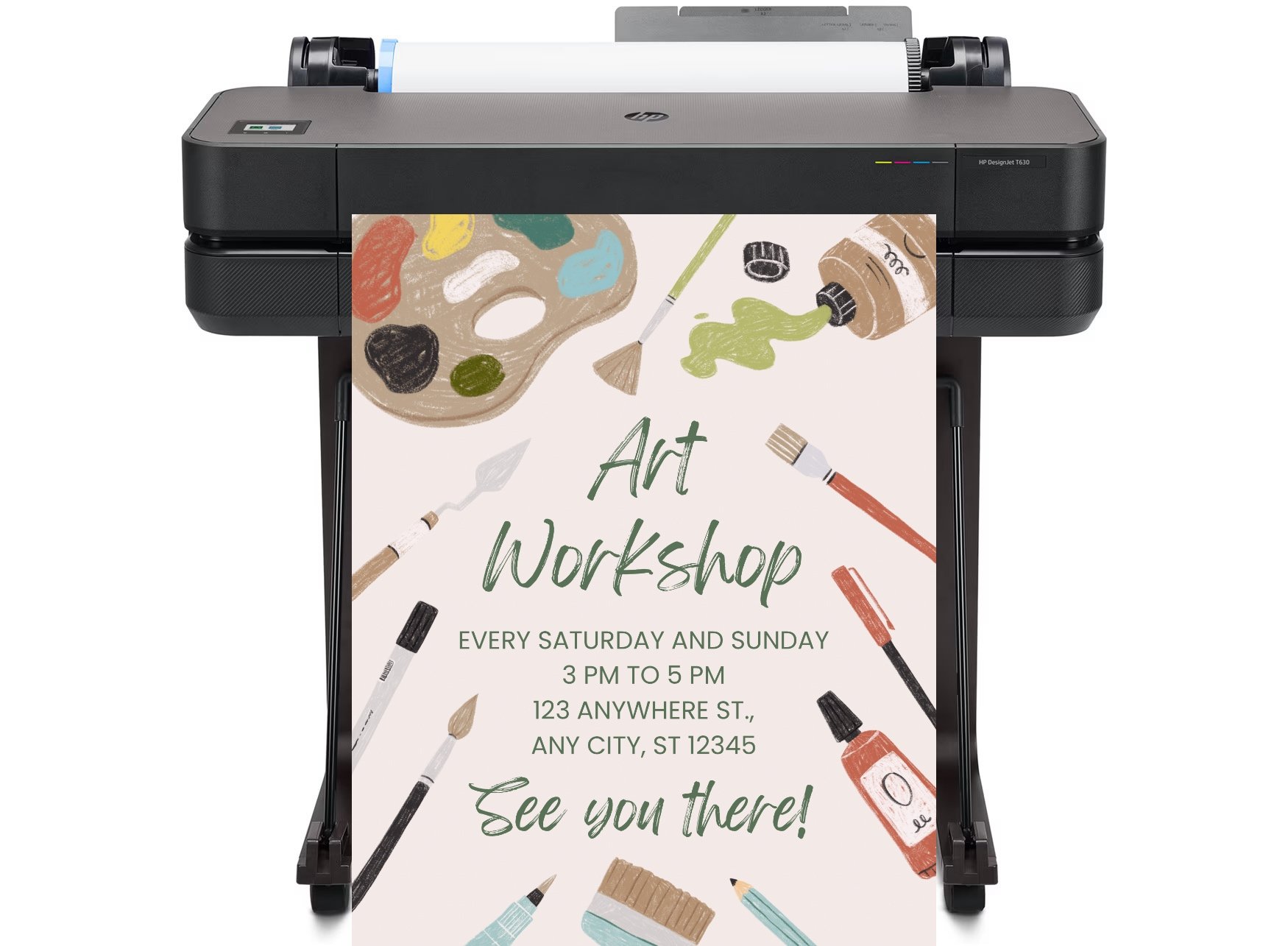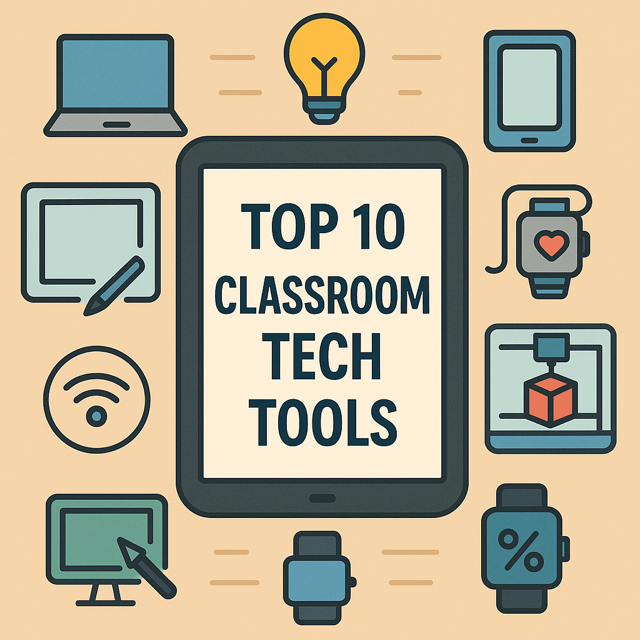
DISCOUNTED EDUCATION PRICING! CALL 1-877-891-8411. We Gladly Accept School Purchase Orders!

In the fast-evolving world of education, technology isn’t just a nice-to-have—it’s a game-changer. As we hit mid-2025, classrooms are blending traditional teaching with cutting-edge tools that personalize learning, streamline workflows, and spark creativity. According to recent surveys, over 65% of teachers now integrate digital tools daily, leading to improved student outcomes and reduced administrative burdens. But with thousands of options out there, where do you start?
This blog post dives into the top 10 classroom tech tools for 2025, curated from expert sources like Edutopia, Cult of Pedagogy, Teaching Channel, and more. These selections prioritize versatility, ease of use, and real impact—whether you’re managing a hybrid class, fostering collaboration, or leveraging AI for personalized feedback. Each tool includes in-depth insights, practical tips, pros and cons, and real-world examples to give you actionable value. By the end, you’ll have a toolkit to make your lessons more interactive, inclusive, and effective. Let’s transform your teaching!
Kahoot! remains a staple in 2025, turning quizzes and assessments into thrilling competitions that keep students hooked. This game-based platform allows teachers to create or use pre-made quizzes where students compete in real-time using their devices. With features like live modes for in-class play and self-paced challenges for homework, it’s perfect for reinforcing concepts across subjects.
What sets Kahoot! apart is its advanced analytics dashboard, which provides insights into student performance, highlighting knowledge gaps for targeted follow-ups. Benefits include boosted participation—especially for shy students—and immediate feedback that reinforces learning. In a classroom setting, use it for quick reviews: Start a history lesson with a Kahoot! on key dates, letting students vote and discuss wrong answers collaboratively.
Insights: Research shows gamification increases retention by up to 90%, as it taps into dopamine-driven motivation. Tip: Integrate Kahoot! with Google Classroom for seamless assignment distribution. Pros: Free basic version, highly engaging, multilingual support. Cons: Can feel chaotic in large classes; premium features (like detailed reports) cost extra. Example: A science teacher uses Kahoot! for formative assessments, adapting lessons based on analytics to improve test scores by 15%.
Word count booster: Beyond quizzes, explore Kahoot!’s new AI-generated question banks, which save prep time. Teachers report it reduces burnout by making routine checks fun, while students love the leaderboard for friendly rivalry.
Canva’s education-focused version empowers teachers and students to create stunning visuals without design skills. From posters and infographics to presentations and worksheets, its drag-and-drop interface includes thousands of templates tailored for classrooms. In 2025, AI enhancements like Magic Studio auto-generate layouts and suggest edits, making it faster than ever.
Benefits extend to visual learners, helping them grasp complex ideas through graphics. Use it in class for student projects: Assign a biology infographic on ecosystems, where kids collaborate in real-time. Insights: Visual aids improve comprehension by 400%, per cognitive studies, and Canva fosters 21st-century skills like digital literacy.
Tip: Leverage the free educator account for unlimited storage and premium elements. Pros: Intuitive, collaborative, integrates with Google Drive. Cons: Over-reliance on templates can stifle originality; internet required. Example: An English teacher has students design book covers, sparking discussions on themes and boosting engagement.
Expanding: Canva also supports accessibility with alt text and color contrast tools, ensuring inclusivity for all students, including those with disabilities.
EdPuzzle transforms passive video watching into active learning by letting teachers embed quizzes, notes, and voice-overs into clips from YouTube, Khan Academy, or custom uploads. In 2025, its AI features auto-generate questions and track progress in real-time, preventing skipping ahead.
Key benefits: Increases retention through accountability—students must answer to proceed—and provides data on comprehension. Classroom use: Flip lessons by assigning annotated TED Talks for homework, then discuss in class. Insights: Interactive videos boost understanding by 20-30%, as they encourage reflection.
Tip: Use the gradebook integration for automatic scoring. Pros: Free for basics, prevents cheating with timestamps. Cons: Limited to video-based content; setup takes time. Example: A math teacher embeds questions in tutorial videos, seeing homework completion rates soar.
Deeper value: This tool addresses diverse paces, allowing advanced students to explore extensions while others get scaffolds.
Quizlet offers AI-powered flashcards, games, and tests for self-paced studying. Features like adaptive learning modes adjust difficulty based on performance, while collaborative sets let classes build shared resources. In 2025, integrations with AR for visual subjects add immersion.
Benefits: Personalizes revision, improving long-term recall via spaced repetition. Use in classroom: Create group study sets for vocabulary, or run live games for review. Insights: Active recall techniques, core to Quizlet, enhance memory by 50% over passive reading.
Tip: Export to Google Classroom for easy sharing. Pros: Free, mobile-friendly, vast library. Cons: Can encourage rote learning if overused; ads in free version. Example: History students use Quizlet diagrams for timelines, reporting better exam prep.
Insight: Teachers can track class progress, intervening early for struggling learners.
ClassDojo builds positive culture through points for behaviors, portfolios for student work, and messaging for parents. 2025 updates include AI sentiment analysis on feedback to gauge class mood.
Benefits: Fosters growth mindset, reduces disruptions by 30% in studies. Use: Award points during lessons, share portfolios weekly. Insights: Behavior tracking correlates with academic gains, as motivated students engage more.
Tip: Customize skills to align with school values. Pros: Free, intuitive app. Cons: Privacy concerns with data; not ideal for older students. Example: Elementary teachers use it for virtual high-fives, improving home-school ties.
Value: It promotes SEL, crucial in post-pandemic recovery.
MagicSchool.ai offers over 80 AI tools in one platform: from rubric generators to lesson planners and joke writers. It’s teacher-centric, ensuring ethical AI use.
Benefits: Saves hours weekly, personalizes content. Use: Generate differentiated activities for mixed-ability classes. Insights: AI assistants cut planning time by 50%, freeing focus on teaching.
Tip: Start with the free tier for basics. Pros: Comprehensive, safe for education. Cons: Learning curve; subscription for full access. Example: Create custom explanations for science concepts, adapting to student levels.
Deeper: It builds AI literacy, preparing students for future jobs.
Google’s Notebook LM creates “notebooks” from sources, generating summaries, timelines, and audio overviews. Ideal for curating content.
Benefits: Handles info overload, aids inquiry-based learning. Use: Upload articles for group projects, generating study guides. Insights: Summarization tools improve critical thinking by focusing on key ideas.
Tip: Use audio for auditory learners. Pros: Free, integrates with Google. Cons: Limited to uploaded sources. Example: History classes build timelines from PDFs, enhancing research skills.
Value: Encourages ethical AI use in academia.
Diffit levels reading materials from 2nd to 11th grade, generating questions, vocab, and summaries. AI-driven for any content.
Benefits: Supports differentiation, inclusivity for ELLs. Use: Adapt news articles for current events discussions. Insights: Leveled texts boost comprehension by 25% for diverse groups.
Tip: Export to Google for sharing. Pros: Versatile, image addition. Cons: May oversimplify complex ideas. Example: ELA teachers create tiered readings, personalizing instruction.
Insight: Addresses equity in access to content.
Padlet lets students post notes, images, and videos on shared boards for brainstorming and feedback.
Benefits: Enhances collaboration, visualizes ideas. Use: Digital gallery walks for projects. Insights: Peer interaction builds communication skills, vital for teamwork.
Tip: Moderate posts for safety. Pros: Real-time, multimedia. Cons: Free limits boards. Example: Art classes share critiques, fostering community.
Value: Works hybrid, connecting remote learners.
SchoolAI provides controlled chatbots for questions and feedback, with teacher oversight via “Mission Control.”
Benefits: Personalizes support, multilingual. Use: Set up topic-specific “Spaces” for tutoring. Insights: AI feedback accelerates learning loops.
Tip: Monitor sentiment for interventions. Pros: Privacy-focused, insights dashboard. Cons: Subscription needed. Example: Math teachers use for homework help, reducing after-hours queries.
Deeper: Builds independence while ensuring guidance.
These top 10 tools for 2025—from gamified quizzes to AI assistants—offer immense value, addressing engagement, personalization, and efficiency. We’ve covered the best stem apps for students, but classroom tech tools have changed the game for teachers. Start small: Pick one, like Kahoot! for quick wins, and scale up. The key insight? Tech amplifies great teaching, not replaces it. Experiment, gather student feedback, and watch your classroom thrive. What’s your go-to tool? Share in the comments—let’s build a community of innovative educators! Learn more about our pick for poster printer tech.